Danish Jews celebrate 400 years of existence: A story of tolerance and antisemitism
The embassy in Israel brought together Danish Holocaust survivors, historians and the First Lady of Israel for a special event in Tel Aviv.
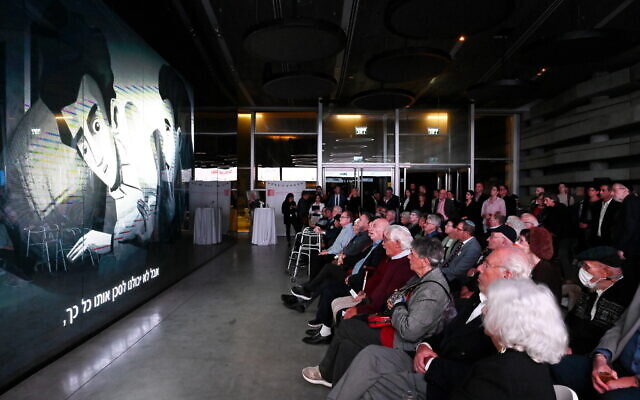
The Jewish community in Denmark is celebrating 400 years since the king at the time invited the first Jews to live in the country.
The Danish embassy in Israel brought together Holocaust survivors, historians, students and the First Lady of Israel for a special event in Tel Aviv/Yafo, to celebrate and commemorate the history of the community.
The story of Denmark and its Jewish community is one of incredible tolerance but also antisemitism, explained historian and director of Denmark’s Jewish Museum in Copenhagen, Janus Møller Jensen.
“Generally, the Danish authorities have taken good care of it’s Jewish minority,” Jensen said.
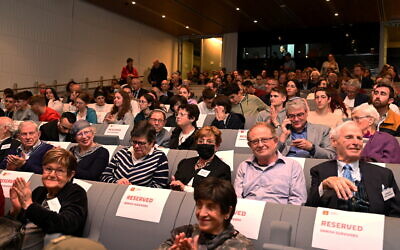
Toward the end of the 17th century, the chief of Danish Police in Copenhagen suggested that the Jews who had begun to settle in the capital should be gathered in a ghetto. “But the Danish authorities said ‘no, this is not going to happen,'” Jensen said.
In the middle of the 18th century there was a suggestion that Jews should be singled out by wearing armbands, while another proposal sought to send Jews to Greenland and confiscate their belongings.
“Again, the authorities said no,” Jensen said. Authorities also reacted strongly to a fierce public debate about Jewish emancipation in the early 1800’s, which had blatant antisemitic voices, by granting Jews civic rights.
Simultaneously, Norway, which had been united in a Twin Kingdom with Denmark a few years earlier, enacted a new law which said Jews were not allowed to live in the country.
The great rescue
The turning point in the history of Danish Jews came in October 1943, when the Nazi occupation of Denmark became intolerable and dangerous for the Jewish community.
On 29 August 1943, the pre-existing status quo agreement between the Danish government and Nazi Germany broke down, leading Hitler to order the deportation of Danish Jews, who had been protected up until then. The order was leaked to Danish politicians who managed to warn the Jewish community in time.
אנחנו גאים לבשר שבשבוע הבא אנחנו מתחילים בפרוייקט חינוכי ייחודי ביחד עם בית לוחמי הגטאות. הפרוייקט ירוץ לאורך כל השנה הבאה לציון 80 שנים להצלת יהודי דנמרק בתקופת השואה.את התוכנית החינוכית נפרסם ברחבי הארץ, בדנמרק ובמדינות נוספות במטרה לאפשר לצעירים (ולמבוגרים) לראות את הסרט, להכיר את הסיפור ולהתעמק בסיפור ההיסטורי המופלא הזה.הסרט מציג סיפור על מדינה, עם, חברה שבחרה להגן על כל אזרחיה למרות הסיכון הכרוך בכך.הסרט הופק על ידי Humanity in Action (ארה"ב) ובתמיכה של משרד החוץ של דנמרק ושגרירות דנמרק בישראל. מהשבוע הבא יוכלו מורים, מדריכים ואחרים להראות את הסרט לתלמידים וחניכים ברחבי ישראל כדי להבטיח את זיכרון השואה לדורות הבאים.סיפור הצלת יהודי דנמרק הוא קרן של אור בחשכת השואה."מעט מן האור דוחה הרבה מן החושך"#אנחנו_זוכרים #שומר_אחי_אנוכי #80years #SaveYourNeighbour #society #DanishJews
Posted by Embassy of Denmark in Israel – שגרירות דנמרק בישראל on Friday, December 9, 2022
In what would become one of the most well known rescue stories of the Holocaust, some 7,000 Danish Jews began fleeing Denmark to Sweden on boats in the middle of the night throughout October.
Policemen, priests, fishermen, intellectuals, doctors and civilians in general contributed to the efforts to rescue Jews from the Nazis in October of 1943.
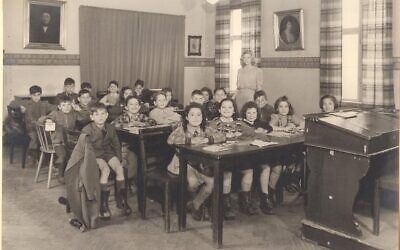
481 Jews didn’t make it in time and were captured by Nazi soldiers and deported to Theresienstadt concentration camp in Czechoslovakia of whom 52 died.
Holocaust survivor Manfred Hildesheim recalled how they were told in the Synagogue not to be home on 1 October when the Nazis would come looking for Jews.
“I remember we listened to Swedish radio where the prime minister was inviting Danish Jews to come to Sweden,” Hildesheim said.
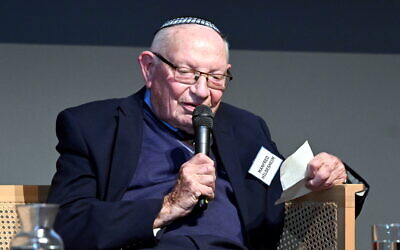
“In the end, there was one guy who was ready to take us from the port of Copenhagen to Sweden. But it was forbidden for us to take any luggage because it would arouse suspicion if the Nazi soldiers saw us. We were like sardines in the boat,” he said.
Bo Lidegaard, Danish historian and author of “Countrymen: The untold Story of How Denmark´s Jews Escaped the Nazis,” said the rescue mission was not “a miracle but an act of citizens in a society who profoundly understood what was really at stake and spontaneously acted in a situation where they had no government or no free press to direct them.”
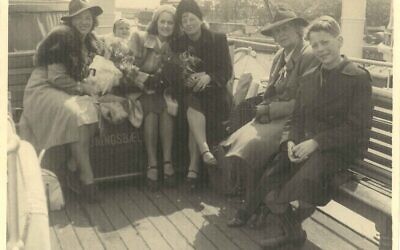
Lidegaard described the rescue mission to Sweden as “unique” in the Holocaust, “because in general, this wasn’t the pattern we saw in other (Nazi) occupied territories.”
The background for this unique act, Lidegaard said, was a Danish society that had understood what a small country like Denmark could do against the threats of fascism and Nazism in the years leading up to the war.
“The Danes turned inwards and built a society that became as resilient, united and inclusive as possible around the core values of democracy and respect for the individual. This meant that when the occupation came, we didn’t put up a credible defence and caved in to what was left of democracy. But we did draw some red lines. One of them was not to distinguish between different types of citizens, ” he added.
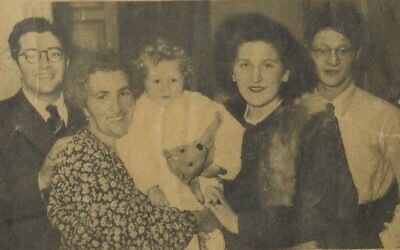
The First Lady of Israel, Michal Herzog, applauded the Danish rescue mission in 1943, saying “It has been said that ethics is obedience to that which cannot be enforced. The story of the rescue of Danish Jewry illustrates this very well. It highlights a simple but profound truth: that when we are left to reckon with what really matters, it is only the call of our own heart that stands between us and complicity with evil.”
“In Denmark in 1943, in the most extreme circumstances imaginable, ordinary human beings—bishops and priests, fishermen and farmers—chose to hear their heart’s calling above the fearful cry of survival. They refused to accept that they were powerless and refused to believe that they had no choice. They knew that there is always a choice. And they made the choice, as people, to save people. It is a moral inheritance that we have received from them. And it is one that it is our duty to pass on,” Herzog added.
Several Danes, whose acts of rescue were exceptional, were later awarded the title of Righteous Among the Nations title. A plague dedicated to the Danish Underground is placed today at Yad Vashem Holocaust Memorial.

Thank you for helping to make Jewish News the leading source of news and opinion for the UK Jewish community. Today we're asking for your invaluable help to continue putting our community first in everything we do.
For as little as £5 a month you can help sustain the vital work we do in celebrating and standing up for Jewish life in Britain.
Jewish News holds our community together and keeps us connected. Like a synagogue, it’s where people turn to feel part of something bigger. It also proudly shows the rest of Britain the vibrancy and rich culture of modern Jewish life.
You can make a quick and easy one-off or monthly contribution of £5, £10, £20 or any other sum you’re comfortable with.
100% of your donation will help us continue celebrating our community, in all its dynamic diversity...
Engaging
Being a community platform means so much more than producing a newspaper and website. One of our proudest roles is media partnering with our invaluable charities to amplify the outstanding work they do to help us all.
Celebrating
There’s no shortage of oys in the world but Jewish News takes every opportunity to celebrate the joys too, through projects like Night of Heroes, 40 Under 40 and other compelling countdowns that make the community kvell with pride.
Pioneering
In the first collaboration between media outlets from different faiths, Jewish News worked with British Muslim TV and Church Times to produce a list of young activists leading the way on interfaith understanding.
Campaigning
Royal Mail issued a stamp honouring Holocaust hero Sir Nicholas Winton after a Jewish News campaign attracted more than 100,000 backers. Jewish Newsalso produces special editions of the paper highlighting pressing issues including mental health and Holocaust remembrance.
Easy access
In an age when news is readily accessible, Jewish News provides high-quality content free online and offline, removing any financial barriers to connecting people.
Voice of our community to wider society
The Jewish News team regularly appears on TV, radio and on the pages of the national press to comment on stories about the Jewish community. Easy access to the paper on the streets of London also means Jewish News provides an invaluable window into the community for the country at large.
We hope you agree all this is worth preserving.





















